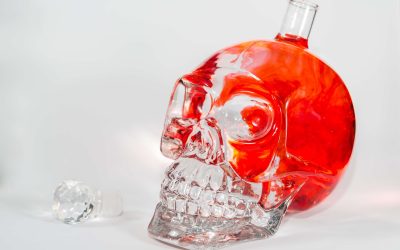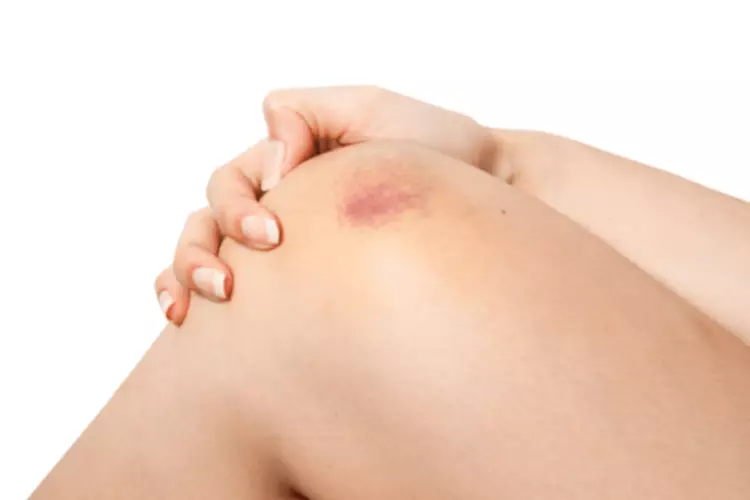These estimates in 2019 were higher than the estimates in each year from 2008 through 2016, but they were similar to the estimates in 2017 and 2018. Among adults aged 18 or older, the percentage who made a suicide plan in the past year increased from 1.0 percent (or 2.3 million people) in 2008 to 1.4 percent (or 3.5 million people) in 2019 (Figure 62 and 2019 DT 10.39). Among adults aged 26 to 49, the percentage who had serious thoughts of suicide in the past year increased from 4.0 percent (or 4.0 million people) in 2008 to 5.3 percent (or 5.3 million people) in 2019 (Figure 61 and 2019 DT 10.36). These estimates in 2019 were higher than the estimates in each year from 2008 through 2018. Among young adults aged 18 to 25, the percentage who had serious thoughts of suicide in the past year increased from 6.8 percent (or 2.2 million people) in 2008 to 11.8 percent (or 3.9 million people) in 2019 (Figure 61 and 2019 DT 10.36).
Prescription Tranquilizer or Sedative Use Disorder
Among young adults aged 18 to 25, the percentage who were past month alcohol users declined from 61.4 percent (or 19.5 million people) in 2003 to 54.3 percent (or 18.3 million people) in 2019 (Figure 7 and 2019 DT 7.12). These estimates in 2019 were lower than those in 2003 to 2017, but they were similar to those in 2018. Among the 45.9 million current cigarette smokers aged 12 or older in 2019 (see the section on Cigarette Use), 26.8 million people were daily cigarette smokers (Figure 4), and 10.8 million people smoked 16 or more cigarettes per day (i.e., approximately one pack or more per day).
- Among people aged 12 or older in 2019, 3.0 percent (or 8.3 million people) had at least one illicit drug use disorder in the past year (Figure 38 and 2019 DT 7.46).
- Also to protect respondent privacy, some variables are not available, including geographic variables.
- The 2019 NSDUH asked respondents to identify specific prescription pain relievers they used in the past year, then asked whether they misused those pain relievers in the past year.
- The number of people aged 12 or older in 2019 who initiated prescription tranquilizer misuse in the past year averaged to about 2,600 people each day (Table A.3A).
Looking for Treatment?
Volkow hopes the study will spur actions to better address the needs of these children, so their long-term risks can be minimized. For example, she hopes there will be efforts made to keep children with their siblings and/or other relatives, with families receiving the supports and services they need to address these children’s mental health needs. Additional survey data during the COVID-19 pandemic, however, has revealed higher reported rates of drinking and drug use among adults, as well as alarming spikes in fatal drug overdoses.
- Binge drinking for males was defined as drinking five or more drinks18 on the same occasion on at least 1 day in the past 30 days, which has remained unchanged from the threshold prior to 2015.
- This percentage in 2019 was lower than the percentages in 2015 and 2017 but was similar to the percentages in 2016 and 2018.
- For example, adults aged 26 or older were more likely than adolescents aged 12 to 17 or young adults aged 18 to 25 to perceive great risk of harm from smoking one or more packs of cigarettes per day (Figures 34, 35, and 36 and 2019 DT 7.34, 7.36, and 7.37).
- Among adolescents aged 12 to 17, the percentage who were past month alcohol users declined from 17.6 percent (or 4.4 million adolescents) in 2002 to 9.4 percent (or 2.3 million adolescents) in 2019 (Figure 7 and 2019 DT 7.6).
- Among adults aged 26 or older in 2019, 55.0 percent (or 119.1 million people) drank alcohol in the past month (Figure 7 and 2019 DT 7.15).
National Drug Early Warning System (NDEWS)
Among adults aged 50 or older in 2019, 3.2 percent (or 3.6 million people) had a past year MDE with severe impairment (Figure 50 and 2019 DT 10.33). Among adults aged 26 to 49, the percentage with a past year MDE increased from 7.6 percent (or 7.5 million people) in 2005 to 8.9 percent (or 8.9 million people) in 2019 (Figure 49 and 2019 DT 10.32). These estimates in 2019 were higher than the estimates in each year from 2005 through 2018. Among young adults aged 18 to 25, the percentage with a past year MDE increased from 8.8 percent (or 2.8 million people) in 2005 to 15.2 percent (or 5.0 million people) in 2019 (Figure 49 and 2019 DT 10.32). Among adults aged 18 or older, the percentage with a past year MDE increased from 6.6 percent (or 14.2 million people) in 2005 to 7.8 percent (or 19.4 million people) in 2019 (Figure 49 and 2019 DT 10.32). Among young adults aged 18 to 25 in 2019, 0.2 percent (or 62,000 people) had a heroin use disorder in the past year (Figure 41 and 2019 DT 7.49).
California Adds Resources to Fight the Opioid Crisis California Governor – Office of Governor Gavin Newsom
California Adds Resources to Fight the Opioid Crisis California Governor.
Posted: Thu, 14 Dec 2023 08:00:00 GMT [source]
Non-sanctioned/non-medical/non-prescribed use of these controlled substances is considered drug abuse. 31 Examples of forms of fentanyl presented to NSDUH respondents are available by prescription. NSDUH respondents were not asked about the use of fentanyl illicitly manufactured in clandestine laboratories. 25 The 2019 NSDUH questionnaire included separate sections for tranquilizer misuse and sedative misuse. Data from these sections were combined to produce aggregate estimates for the misuse of any tranquilizer or sedative. 7 Overall response rates are not calculated for adolescents or adults because the screening response rate is not specific to age groups.
- Approximately 95 percent of the people in 2019 who needed treatment for a substance use problem were classified as such because they had an SUD in the past year, regardless of whether they received substance use treatment at a specialty facility.
- Prescription pain relievers could include some nonopioids because respondents could occasionally specify the misuse of other prescription pain relievers that are not opioids.
- Although the centers are primarily substance use treatment centers, other sites, such as driving while intoxicated centers, probation offices, or any site using the ASI-MV tool that agrees to share aggregate assessment data might also be included.
- Among these adults in 2019 who had a co-occurring SUD and AMI in the past year, 2.1 percent (or 147,000 people) received only substance use treatment at a specialty facility.
- In 2017, the cost of drug abuse in the US was nearly $272 billion, taking into account crime, healthcare needs, lost work productivity and other impacts on society.
Drug Regulation & Scheduling
This percentage in 2019 was similar to the percentage in each year from 2009 to 2017, but it was higher than the percentage in 2018. Among the 5.0 million young adults aged 18 to 25 in 2019 who had a past year MDE, 50.9 percent (or 2.6 million people) received treatment for depression in the past year (Figure 72 and 2019 DT 10.32 and 10.34). Among substance abuse in older adults adults aged 26 or older in 2019 with a past year SUD who did not receive substance use treatment at a specialty facility, 4.8 percent perceived that they needed treatment. Among young adults in 2019 with a past year SUD who did not receive substance use treatment at a specialty facility, 3.5 percent perceived that they needed treatment.
- Prescription opioid drugs like oxycodone (OxyContin) have a high potential for misuse and addiction.
- These estimates in 2019 were higher than those in 2002 to 2016, but they were similar to those in 2017 and 2018.
- The NSDUH series, formerly the National Household Survey on Drug Abuse, is the leading source of statistical data on alcohol, tobacco, drug use, mental health, and other health-related issues in the United States among the general population.
- These estimates in 2019 were higher than the estimates in most years from 2002 through 2018.

Among people aged 12 or older in 2019, 1.0 percent (or 2.6 million people) received substance use treatment at a specialty facility in the past year (Figure 68 and 2019 DT 7.57). Among people aged 12 or older in 2019 who had a past year SUD, 10.3 percent (or 2.1 million people) received any substance use treatment in the past year (Figure 67 and 2019 DT 7.56). Among people aged 12 or older in 2019, 1.5 percent (or 4.2 million people) received any substance use treatment in the past year (Figure 65 and 2019 DT 7.51). Among adults aged 26 to 49, the percentage who made a suicide plan in the past year increased from 1.1 percent (or 1.1 million people) in 2008 to 1.5 percent (or 1.5 million people) in 2019 (Figure 62 and 2019 DT 10.39). These estimates in 2019 were higher than the estimates in most years from 2008 through 2015, but they were similar to the estimates in 2016 to 2018. Among young adults aged 18 to 25, the percentage who made a suicide plan in the past year increased from 2.0 percent in 2008 (or 643,000 people) to 3.9 percent (or 1.3 million people) in 2019 (Figure 62 and 2019 DT 10.39).
Based on their findings, the researchers emphasize the importance of whole-person health care that treats a person with substance use disorder as a parent or family member first and foremost, and provides prevention resources accordingly to support families and break generational cycles of substance use. The study also points to the need to incorporate culturally-informed approaches in prevention, treatment, recovery, and harm reduction https://ecosoberhouse.com/ services, and to dismantle racial and ethnic inequities in access to these services. These include major depressive episodes, suicidal ideation and attempts, mental illness, and access to and use of mental health care. Substance Use Disorders (SUDs) are treatable, chronic diseases characterized by a problematic pattern of use of a substance or substances leading to impairments in health, social function, and control over substance use.






